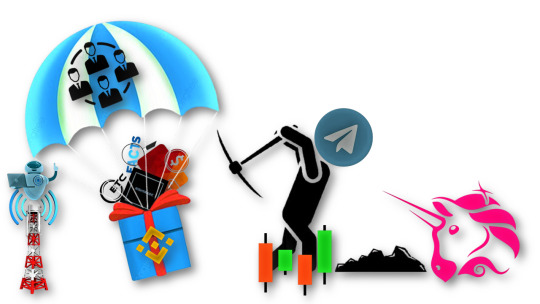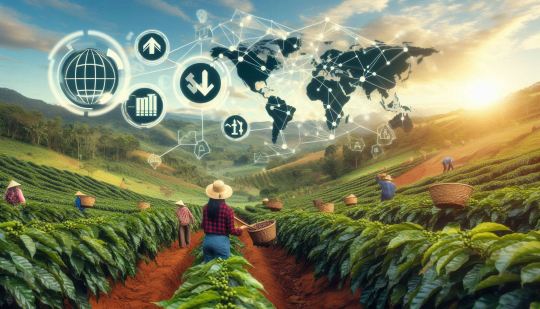#Build Trading Strategies
Explore tagged Tumblr posts
Text
working on scripting out my Mary backstory comic and. huh her friend group would make for a really good dnd team
#…and yes her friend group IS just her and pretty much all the other named (/implied) characters who she would have interacted with lol#sans amber and lee. who are also named and there but Mary’s not like. Close close friends with#but yeah yasser is like. the leader of the party n probably multiclasses lol. mostly combat + strategy but is kinda a jack of all trades#mary is the charisma guy. probably a warlock I think but probably a level or two in bard or cleric#lupe is wizard with a few levels in I think maybe mercy monk? which would undoubtedly be an AWFUL build to get right#cuz obviously monks are split between wis/dex/con as is and adding a wizard’s need for int would be kinda impractical in an actual#dnd game if you’re minmaxing#alternatively Lupe is an artificer with a focus on the more mental stats. or a paladin#yeah y’know what no matter what I think her role in a DnD game would be hard to pull off haha. rip#that’s probably why she died /j#and then Hank is an artificer with a focus mostly in dex con and cha in that order. has decent but very average stats overall#also it’s important to note that in this party Mary is the Token Straight. like hank is also straight tbh but he loves his nonbinary wife <#Mary is supportive but. constantly the embodiment of the ‘he’s a lil confused but he’s got the spirit’ meme lol#mary shaperaverse#shaperaverse#<- organizational tag if this shows up in the main tag uhm. hi am working on a Mary thing sry for the soon-to-be constant rambling!
2 notes
·
View notes
Text
How Beginners Can Use Investing Apps to Start Building Wealth?

Stock trading has been on the rise for quite some time now, especially among youngsters. The youth are on the constant lookout for newer investing apps which make their job easy. E-commerce apps that provide investing services have also surged to impeccable heights & made wealth for a significant number of individuals. There’s no fixed formula for investing in the stock market. A well-structured portfolio & strategic investments can take you to quite wealthy distances.
For C-suite executives, startup entrepreneurs, and managers, understanding how investing apps empower users is essential—not only for personal financial growth but also to stay informed about technological advancements in the financial sector. This article explores how beginners can leverage investing apps to start building wealth effectively and strategically.
The Game-Changing Impact of Investment Platforms

The rise of investing apps has eliminated traditional barriers such as high fees, complicated processes, and the necessity for financial advisors. These apps have democratized investing through features such as:
Low or No Commission Fees – Many platforms offer commission-free trades, making investing more affordable.
Fractional Shares – Users can invest in small portions of high-priced stocks, allowing broader access to valuable assets.
Automated Portfolio Management – Robo-advisors create customized portfolios based on individual risk tolerance and financial goals.
Educational Resources – Built-in learning materials help beginners understand market trends and investment strategies.
User-Friendly Interfaces – Simple navigation, real-time analytics, and personalized recommendations make investing more intuitive.
By incorporating these features, investment platforms make financial markets more inclusive, giving users the ability to take charge of their financial futures.
Steps for Beginners to Start Investing
1. Define Your Investment Goals
Before selecting an investing app, users should determine their financial objectives. Are they investing for retirement, wealth accumulation, or short-term financial gains? Identifying goals helps in choosing appropriate investment strategies and risk levels.
2. Choose the Right Investing App
Different investment platforms cater to various investor needs:
Stock Trading Apps (e.g., Robinhood, Webull) – Best for hands-on trading.
Robo-Advisors (e.g., Betterment, Wealthfront) – Ideal for automated, long-term investing.
Micro-Investing Apps (e.g., Acorns, Stash) – Suitable for those starting with small amounts.
Social Investing Apps (e.g., eToro, Public) – Allow users to follow and replicate expert traders.
Cryptocurrency Apps (e.g., Coinbase, Binance) – For those looking to diversify into digital assets.
3. Start Small and Diversify
Beginners should avoid placing all their funds into a single stock or asset class. A diversified portfolio—including stocks, ETFs, bonds, and real estate—helps manage risk. Many investing apps provide guidance on asset allocation to optimize investment strategies.
4. Utilize Automated Investment Tools
Features such as recurring deposits and robo-advisors enable users to invest consistently without the need for active monitoring. Automation removes emotional biases and encourages disciplined investment habits.
5. Continuously Learn and Adapt
While investing apps simplify the investment process, continuous learning is crucial. Staying updated on financial news, market trends, and portfolio performance enhances decision-making and long-term success.
Common Mistakes to Avoid When Using Mobile Trading Apps
1. Emotional Decision-Making
Market fluctuations can trigger impulsive buying or selling. It is vital to maintain a long-term perspective rather than reacting to short-term volatility.
2. Overtrading
Many beginners engage in excessive trading due to the accessibility of investing apps. Frequent transactions can lead to unnecessary fees and market timing errors, ultimately reducing profits.
3. Ignoring Fees and Hidden Costs
Although many platforms offer commission-free trading, other charges such as fund expense ratios and premium account fees can accumulate. Users should evaluate costs before committing to an app.
4. Failing to Rebalance Portfolios
Market changes can impact asset allocation over time. Regularly reviewing and adjusting investment portfolios ensures alignment with financial goals and risk tolerance.
5. Neglecting Tax Implications
Investing comes with tax obligations, including capital gains taxes. Some trading applications provide tax-loss harvesting features, which can help users optimize their tax liabilities and maximize returns.
The Future of Investing Apps in Wealth-Building

With advancements in AI, blockchain technology, and machine learning, the next generation of investing apps will offer even more personalized, intelligent, and secure solutions. Features such as AI-driven financial advisors, real-time risk assessment, and decentralized finance (DeFi) integration are set to redefine digital investing.
Furthermore, stock market apps are expanding to include more asset classes, such as real estate crowdfunding, private equity, and alternative investments, broadening opportunities for investors.
For business leaders and entrepreneurs, staying ahead of these trends is crucial. Whether using investing apps for personal wealth-building or incorporating fintech innovations into business strategies, digital investment tools present vast opportunities for financial growth.
Conclusion
The accessibility and convenience of trading applications have transformed the investment landscape, allowing beginners to build wealth with minimal capital and financial expertise. By defining clear financial goals, selecting the right platform, diversifying assets, and committing to continuous learning, users can effectively manage their financial future.
As investing apps continue to innovate, they will play an increasingly crucial role in shaping financial markets and fostering inclusive investment opportunities. The democratization of finance through trading portfolio ensures that wealth-building is no longer limited to a select few. With the right strategies and tools, anyone can participate in the financial markets and work toward a prosperous future.
Uncover the latest trends and insights with our articles on Visionary Vogues
3 notes
·
View notes
Text
Hee hee hee getting out all my old magic cards and sorting them in preparation for Corrupting my poor innocent girlfriend
#my collection is not that big but thanks to a generous family friend when i was in high school#i do have enough to make several types of unique and interesting decks#no way in hell are we gonna get into standard but i love trading card games and it'll be so fun to have someone to play with again#I'm thinking to teach her the game I'll build her a mono white lifegain and enchantment deck#considering building myself a blue/black mill deck since it's my favorite gimmick strategy and pretty easy to win against#but i don't want to frustrate her... blue gimmick decks can be so annoying to go up against especially for a beginner even if you win#so much to think about
2 notes
·
View notes
Text
youtube
Want to level up your options trading game? This video is your step-by-step blueprint to designing powerful, profit-focused trading systems using options. Whether you're looking to generate consistent income, manage risk effectively, or capitalize on market moves — mastering a well-structured system is key. In this in-depth session, we reveal the core components of a successful options trading framework, from entry and exit rules to position sizing, volatility analysis, and strategy selection. No more guessing. It’s time to start trading with confidence, structure, and precision. Websites: https://tradegenie.com/ https://nosheekhan.com/ Twitter -https://twitter.com/marketswizard Facebook -https://www.facebook.com/financialmar Head Office: Trade Genie Inc. 315 South Coast Hwy 101, Encinitas, CA 92024 Phone Number:212-408-3000 #OptionsTrading #TradingSystems #ProfitStrategy #OptionStrategies #TradingEducation #MarketStrategy #TradeSmart #WealthBuilding #FinancialFreedom #OptionsProfit #RiskManagement #VolatilityTrading #WinningTrades #CraftingProfits #TradeWithPurpose
#Options-Trading#Trading-Systems#Profit-Strategy#Option-Strategies#Trading-Education#Market-Strategy#Trade-Smart#Wealth-Building#Financial-Freedom#Options-Profit#Risk-Management#Volatility-Trading#Winning-Trades#Crafting-Profits#Trade-With-Purpose#Youtube
1 note
·
View note
Text

#trading community#investment insights#crypto signals#forex trading alerts#stock market updates#trading strategies#financial news#business growth#crypto airdrops#automated trading bots#secure wallets#profitable mining#market indicators#trading exchanges#swap deals#trusted trading platforms#passive income#wealth building#financial freedom#Rishtrade Telegram
0 notes
Text

"Free Stock Market Investment Workshop: Learn to Grow Your Wealth"
"Join our free stock market investment workshop designed for beginners and aspiring investors! Discover the basics of stock trading, portfolio building, and risk management with expert guidance. No prior experience needed—start your journey toward financial freedom today!"
#Free stock market workshop#Stock market investment for beginners#Learn stock trading#Free investment seminar#Stock market basics#Investing workshop#Beginner trading course#How to invest in stocks#Financial literacy#Wealth building strategies
0 notes
Text

Discover the key differences between Portfolio Management Services (PMS) and DIY Investing. Learn which strategy suits your financial goals, risk tolerance, and investment style for optimal wealth growth.
#PMS#DIY investing#portfolio services#wealth management#stock market#investment strategy#financial planning#passive investing#active investing#risk management#mutual funds#equities#financial growth#wealth building#asset management#ROI#trading strategies#long-term investing#personal finance#market trends.
0 notes
Text
Unleash the Bots: A Wild Ride into the World of Automated Trading Bots for Cryptocurrencies!

View On WordPress
#Best trading courses for advanced traders#Central Bank Digital Currencies (CBDCs) trading#How to build a diversified trading portfolio#Impact of geopolitical events on trading 2025#Low-risk options trading strategies#Smart contract trading platforms#Social trading platforms and copy trading
1 note
·
View note
Text
#common investor#preferred investor#stock market investing#dividend stocks#investment strategy#portfolio management#risk management#stock trading#equity investing#financial planning#wealth building#market trends#smart investing#long-term investing#passive income#voting rights#capital appreciation#liquidation order#growth stocks#preferred dividends#stock investment#finance tips#business growth#trading tips#investor education
0 notes
Text
Algorithmic trading, also known as algo trading, is gaining traction among traders for its ability to facilitate the execution of trades rapidly and beneficially.
0 notes
Text
From Singapore to Brazil- The Global Network Behind Successful Trading
In today’s interconnected world, successful trading is no longer limited by geography. The ability to access and leverage a global network has become a critical factor for traders, especially in commodities markets like cotton and coffee. As a trader specializing in these commodities, I’ve witnessed firsthand how the combination of local insights and global connections can shape market strategies and drive success.
In this blog, I will explore how the global network—from Singapore to Brazil—plays an essential role in successful trading, drawing from my experiences and observations throughout my career in the cotton and coffee markets.
1. The Significance of Singapore in Global Trade
Singapore is widely recognized as a major hub for international trade and finance. With its strategic location at the crossroads of Asia, Europe, and the Middle East, Singapore has become a critical player in global commodities trading. As a trader based in Singapore, I have access to key financial markets, a vast array of shipping routes, and robust infrastructure that supports the efficient movement of goods across borders.

Singapore’s well-developed banking and financial services sector provides traders with access to capital, risk management solutions, and financial instruments, which are crucial for managing market volatility. Additionally, the city-state’s emphasis on transparency and strong regulatory frameworks fosters an environment of trust and reliability for international transactions.
From a personal perspective, being based in Singapore has given me access to a diverse array of global markets. Whether I am analyzing price trends for cotton in India or monitoring coffee production levels in Vietnam, Singapore’s connectivity allows me to stay in the loop with real-time market data and participate in the fast-moving world of global trading.
2. Brazil: The Heart of Coffee Production
While Singapore is a critical hub for financial and logistics services, Brazil represents a cornerstone of my trading career due to its dominance in the global coffee industry. Brazil is the world’s largest coffee producer, responsible for over one-third of the global supply. Its vast coffee plantations, spanning from Minas Gerais to São Paulo, make it an indispensable part of the coffee supply chain.
In 2017, I had the opportunity to travel to Brazil, where I immersed myself in the country’s coffee trade and deepened my understanding of the market’s inner workings. My time in Brazil was an eye-opening experience, as I was able to visit coffee farms, meet with growers, and gain insight into the production process. I learned about the various factors that affect coffee yields, from weather patterns to soil quality and even global trade policies.
This trip also helped me build valuable relationships with coffee producers and traders in Brazil, strengthening my global network. These connections have proven invaluable in gaining access to firsthand market information, allowing me to make more informed trading decisions.

3. Building a Global Network: The Key to Success
Successful trading requires more than just technical analysis and market knowledge—it requires a strong global network. Over the years, I’ve developed relationships with industry players across various regions, including Asia, South America, and Europe. These connections provide me with an advantage in gathering market intelligence, spotting emerging trends, and reacting quickly to shifting market conditions.
Let’s break down the key components of a global trading network:
a) Local Knowledge and Market Access
One of the most important aspects of a global network is having access to local knowledge. Whether I’m trading cotton from India or coffee from Brazil, I rely on the expertise of local producers, suppliers, and traders. These individuals provide valuable insights into the state of the market, crop conditions, and pricing trends that can’t always be found in reports or data sets.
For example, the impact of weather on crop yields is often more accurately predicted by those on the ground. During my time in Brazil, I was able to gain a deeper understanding of how local conditions, such as droughts or frosts, could affect coffee production and pricing. This knowledge gave me a competitive edge in adjusting my trading strategies accordingly.
b) Real-Time Communication Across Markets
In today’s digital world, real-time communication is essential for success in trading. With markets spanning different time zones and regions, it’s crucial to stay connected 24/7. Platforms like WhatsApp, Slack, and Zoom allow traders to communicate with stakeholders in different countries instantaneously.
As a trader based in Singapore, I can communicate with colleagues in Brazil or Europe in real-time, even when markets are open in different time zones. This ability to maintain a constant flow of information is essential for making timely and strategic decisions, particularly in volatile markets like coffee and cotton.
c) Strategic Partnerships with Global Trading Houses
Another crucial element of a global trading network is the formation of strategic partnerships with large trading houses and institutions. Throughout my career, I’ve had the privilege of working with major trading houses such as ECOM Trading, Glencore, and Morgan Stanley. These institutions have extensive global reach, which allows for the pooling of resources, information, and expertise.
Through these partnerships, I’ve gained access to a broader range of trading tools, such as advanced risk management solutions, hedging strategies, and access to capital. The support of these trading houses has enabled me to take larger positions in the market and manage risks effectively, while also benefiting from their established relationships with suppliers and buyers.

4. Navigating the Challenges of Global Commodities Markets
Trading on a global scale is not without its challenges. Commodities markets, such as cotton and coffee, are highly influenced by factors that are often beyond a trader’s control, including:
Weather Variability: Weather conditions can greatly impact the supply of agricultural commodities. Droughts, frosts, and hurricanes can reduce crop yields and lead to price fluctuations.
Political and Economic Instability: Global commodities markets are vulnerable to geopolitical tensions, trade tariffs, and economic instability. For example, trade wars between major economies or currency fluctuations can disrupt supply chains and affect pricing.
Supply Chain Disruptions: Global supply chains are complex and vulnerable to disruptions. Transportation delays, labor strikes, or disruptions in shipping routes can impact the timely delivery of goods and alter market dynamics.
Successfully navigating these challenges requires a robust risk management strategy and the ability to adapt quickly. My global network plays a critical role in this aspect, as it allows me to gather real-time information, identify potential risks early, and adjust my trading strategies accordingly.
5. The Role of Technology in Expanding Global Networks
In addition to fostering personal relationships, the use of technology has become a game-changer in building and expanding global networks. Online platforms and data analytics tools have made it easier than ever to stay informed, conduct market research, and engage with industry experts from all corners of the world.
For instance, I use data analytics tools to track trends in the commodities markets and gain insights into market sentiment. I also subscribe to online industry publications and research reports that provide updates on global supply and demand dynamics. These resources help me stay ahead of the curve and make data-driven decisions.
Moreover, technology enables traders to attend virtual conferences, webinars, and forums where they can connect with other industry professionals, share knowledge, and build new relationships. This increased accessibility has accelerated the formation of global networks and strengthened collaboration across the commodities trading community.
6. Leveraging Cultural Understanding in Global Trade
Another often-overlooked aspect of successful trading on a global scale is cultural understanding. Building relationships with partners, suppliers, and clients in different countries requires sensitivity to cultural norms and business practices. I’ve found that taking the time to understand local customs and values can go a long way in building trust and fostering long-term relationships.
For example, in my dealings with coffee producers in Brazil, I’ve learned the importance of patience and relationship-building in their business culture. Establishing personal rapport is often a prerequisite to successful negotiations, and it’s not uncommon for meetings to begin with casual conversations over coffee before diving into business discussions.
Similarly, in Asian markets like India and Vietnam, understanding the hierarchical nature of business relationships has been essential in navigating negotiations and ensuring smooth transactions. By respecting local customs and taking a culturally informed approach, I’ve been able to strengthen my global network and secure mutually beneficial deals.
7. The Future of Global Trading: Trends and Opportunities
As the global trading landscape continues to evolve, new opportunities and challenges are emerging. Here are a few key trends that are shaping the future of global commodities trading:
Sustainability and Ethical Sourcing: Consumers are increasingly demanding ethically sourced products, particularly in commodities like coffee and cotton. Traders who can provide transparency in their supply chains and work with producers committed to sustainable practices will have a competitive edge.
Digitalization of Trade: The rise of blockchain technology, digital contracts, and AI-powered trading platforms is revolutionizing the way commodities are traded. These technologies enhance transparency, reduce transaction costs, and streamline the entire trading process.
Climate Change and Crop Resilience: As climate change continues to impact agricultural production, traders must be prepared for increased volatility in supply and pricing. Investment in crop resilience and alternative production methods will be critical for maintaining stability in the commodities markets.
Conclusion
From Singapore to Brazil and beyond, the success of global commodities trading is built on strong networks, strategic partnerships, and a deep understanding of local and international markets. By leveraging a global network of producers, traders, and institutions, I’ve been able to navigate the complexities of cotton and coffee markets, manage risks, and capitalize on emerging opportunities.
In the fast-paced world of trading, staying connected to the global market and maintaining relationships across continents is crucial for long-term success. The journey continues, and as markets evolve, the importance of building and nurturing a global network will only grow.
#Global trading network#Singapore to Brazil trading#Commodities trading insights#Coffee market in Brazil#Cotton trading strategies#Successful trading tips#Global market connectivity#Coffee production Brazil#Trading partnerships#Risk management in commodities#International trade Singapore#Specialty coffee market#Global commodity supply chains#Building a global network for traders#Cross-border trading strategies
0 notes
Text

From Analysis to Action: Combining Technical and Fundamental Approaches in Forex Trading
#Forex Trading#Technical Analysis#Fundamental Analysis#Trading Strategies#Currency Trading#Forex Market#Investment Strategies#Market Analysis#Day Trading#Swing Trading#Forex Education#Online Trading#Global Economics#Economic Indicators#Risk Management#Forex Signals#Trading Tips#Trading Psychology#Market Trends#Forex News#Foreign Exchange#Financial Markets#Trade Setup#Forex Charts#Forex Community#Trading Systems#AI in Trading#Forex Forecasting#Wealth Building#PipInfuse
1 note
·
View note
Text
Equity Investment vs Mutual fund’s investment
Image by freepik Choosing between equity investment and mutual fund investment depends on your financial goals, risk tolerance, time commitment, and investment knowledge. Here’s a comparison to help you decide which might be better for you: Equity Investment Pros: Potential for Higher Returns: If you pick the right stocks, individual equities can offer substantial returns. Control: You have…
#Diversification#equity investment#financial planning#Investing#Investment Strategy#long-term investment#mutual fund investment#Passive Income#Personal Finance#Portfolio Management#Risk Management#Stock Market#Stock Trading#Wealth Building
1 note
·
View note
Text
Portfolio Management Services vs. DIY Investing: Which Is Better?

Managing investments isn't any easy feat. With markets fluctuating, financial situations evolving, and economic desires continuously shifting, people frequently discover themselves at a crossroads: should they choose expert portfolio management services or take topics into their very own hands through DIY investing?
For those critical approximately long-time-period financial growths, expertise in the distinction between those two procedures is crucial. The proper preference depends on experience, danger tolerance, and the potential to navigate complex market conditions.
Why Portfolio Management Services Matter
Wealth introduction is not just choosing shares or bonds; it calls for a properly balanced funding portfolio control strategy that aligns with unique economic dreams. Many buyers face not unusual struggles, including emotional selection-making, loss of marketplace expertise, and insufficient risk assessment. This is where the best portfolio management services separate themselves from the rest.
Expert wealth managers provide dependent strategies based totally on danger appetite, time horizon, and economic objectives. Unlike DIY making an investment, wherein feelings regularly cause impulsive selections, expert offerings rely on statistics-pushed insights and diversification strategies to mitigate dangers while optimizing returns.
DIY Investing: Control vs. Complexity
On the other hand, DIY making an investment offers entire management over funding decisions. It appeals to those who choose a hands-on approach, whether or not through stocks, mutual funds, or ETFs. With access to real-time market records and economic gear, self-directed buyers can craft their very own techniques and minimize charges associated with professional management.
However, successful DIY investment portfolio management good-sized studies, fieldwork, and nonstop getting to know. Many people battle to keep up with marketplace developments, monetary indicators, and asset allocation concepts. A small misstep—which includes failing to rebalance a portfolio—could have an enormous effect on overall returns.
Key Factors to Consider When Choosing Investment Portfolio Management
Before identifying between portfolio management services and DIY making an investment, positive factors ought to be evaluated:
1. Expertise and Market Knowledge
Portfolio management services rent experts with years of experience in investment techniques, asset allocation, and threat evaluation. Their expertise facilitates making properly knowledgeable choices.
DIY traders ought to educate themselves constantly to stay ahead of marketplace movements and financial developments.
2. Risk Management
The quality portfolio control offerings provide custom-designed threat mitigation strategies, making sure of a nicely diversified investment portfolio.
DIY buyers may also engage in warfare with emotional biases, frequently leading to panic selling or overconfidence in volatile markets.
3. Time Commitment
Professional portfolio managers take care of studies, evaluation, and execution, allowing investors to pay attention to different priorities.
DIY making an investment requires a full-time funding to investigate market tendencies, monetary signs, and economic reviews.
4. Cost Considerations
Portfolio control services charge charges, but these frequently justify themselves through strategic financial booms and hazard reduction.
DIY investing gets rid of control expenses but can result in luxurious mistakes if not achieved wisely.
Making the Right Choice for Long-Term Wealth Growth
While DIYing an investment can be rewarding for people with time, information, and discipline, it is not suitable for anyone. Many traders benefit from professional portfolio control services due to the dependent technique, knowledge, and hazard mitigation they offer. The quality portfolio management services offer not only the most effective strategic funding guidance but also monetary peace of mind.
For the ones serious about constructing and protecting wealth, expert investment portfolio management ensures a disciplined, information-pushed technique. Whether deciding on a hands-on DIY method or leveraging the understanding of pinnacle monetary professionals, the key is to align funding choices with long-term monetary objectives.
A well-managed funding portfolio is not just about pretty much returns—it’s about monetary protection, balance, and attaining economic dreams without pointless dangers. Making the right choice today can form a more secure and wealthy destiny.
#PMS#DIY investing#portfolio services#wealth management#stock market#investment strategy#financial planning#passive investing#active investing#risk management#mutual funds#equities#financial growth#wealth building#asset management#ROI#trading strategies#long-term investing#personal finance#market trends.
0 notes
Text
Sustainable Investing and ESG Trading: Making Money While Feeling Good
Sustainable Investing and ESG Trading: Making Money While Feeling Good Hey there, money moguls and eco-warriors! Are you tired of making cash while contributing to the destruction of our lovely planet? Well, grab your green smoothies and buckle up because we’re diving into the wild world of sustainable investing and ESG trading. It’s like being a superhero for Mother Earth, but without the…

View On WordPress
#Best trading courses for advanced traders#Central Bank Digital Currencies (CBDCs) trading#How to build a diversified trading portfolio#Impact of geopolitical events on trading 2025#Low-risk options trading strategies#Smart contract trading platforms#Social trading platforms and copy trading
1 note
·
View note
